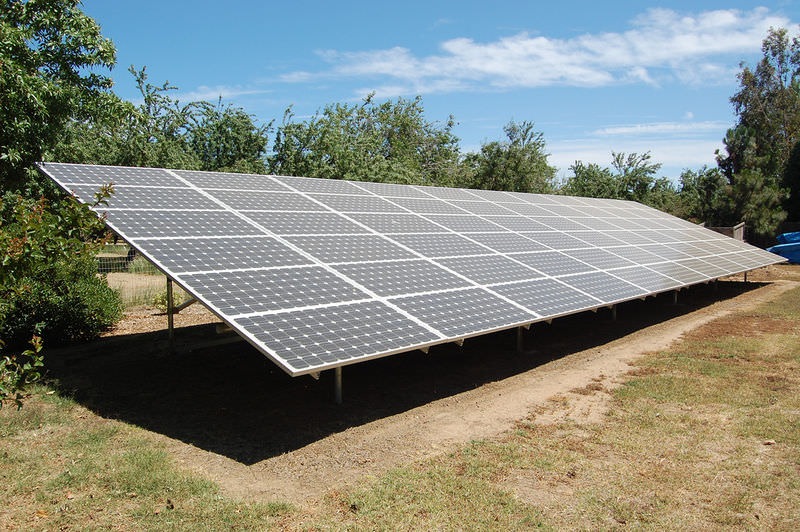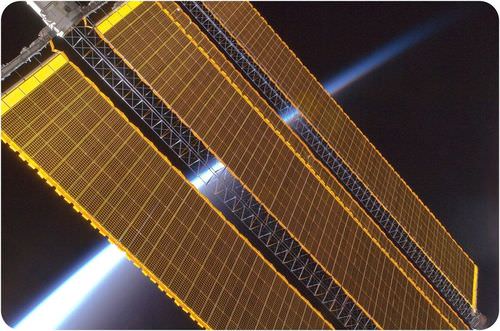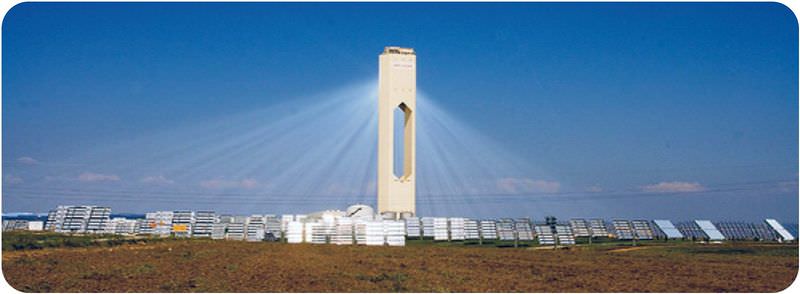
Since so much of the energy we use came ultimately from the Sun, why don't we just get our power directly from the Sun?
That's a good question. Can you answer it?
Solar Energy
Energy from the Sun comes from the lightest element, hydrogen, fusing together to create the second lightest element, helium. Nuclear fusion on the Sun releases tremendous amounts of solar energy. The energy travels to the Earth, mostly as visible light. The light carries the energy through the empty space between the Sun and the Earth as radiation.
Solar Power Use
Solar energy has been used for power on a small scale for hundreds of years, and plants have used it for billions of years. Unlike energy from fossil fuels, which almost always come from a central power plant or refinery, solar power can be harnessed locally (Figure below). A set of solar panels on a home’s rooftop can be used to heat water for a swimming pool or can provide electricity to the house.

Solar panels supply power to the International Space Station.
Society’s use of solar power on a larger scale is just starting to increase. Scientists and engineers have very active, ongoing research into new ways to harness energy from the Sun more efficiently. Because of the tremendous amount of incoming sunlight, solar power is being developed in the United States in southeastern California, Nevada, and Arizona.
Solar power plants turn sunlight into electricity using a large group of mirrors to focus sunlight on one place, called a receiver (Figure below). A liquid, such as oil or water, flows through this receiver and is heated to a high temperature by the focused sunlight. The heated liquid transfers its heat to a nearby object that is at a lower temperature through a process called conduction. The energy conducted by the heated liquid is used to make electricity.

This solar power plant uses mirrors to focus sunlight on the tower in the center. The sunlight heats a liquid inside the tower to a very high temperature, producing energy to make electricity.
Consequences of Solar Power Use
Solar energy has many benefits. It is extremely abundant, widespread, and will never run out. But there are problems with the widespread use of solar power.
Sunlight must be present. Solar power is not useful in locations that are often cloudy or dark. However, storage technology is being developed.
The technology needed for solar power is still expensive. An increase in interested customers will provide incentive for companies to researchand develop new technologies and to figure out how to mass-produce existing technologies (Figure below).
Solar panels require a lot of space. Fortunately, solar panels can be placed on any rooftop to supply at least some of the power required for a home or business.

This experimental car is one example of the many uses that engineers have found for solar energy.
Summary
Solar energy is the result of nuclear fusion in our nearest star.
A liquid is heated and moves that energy by conduction.
Solar power is expensive, but as demand increases technology improves and costs decrease.


No comments:
Post a Comment